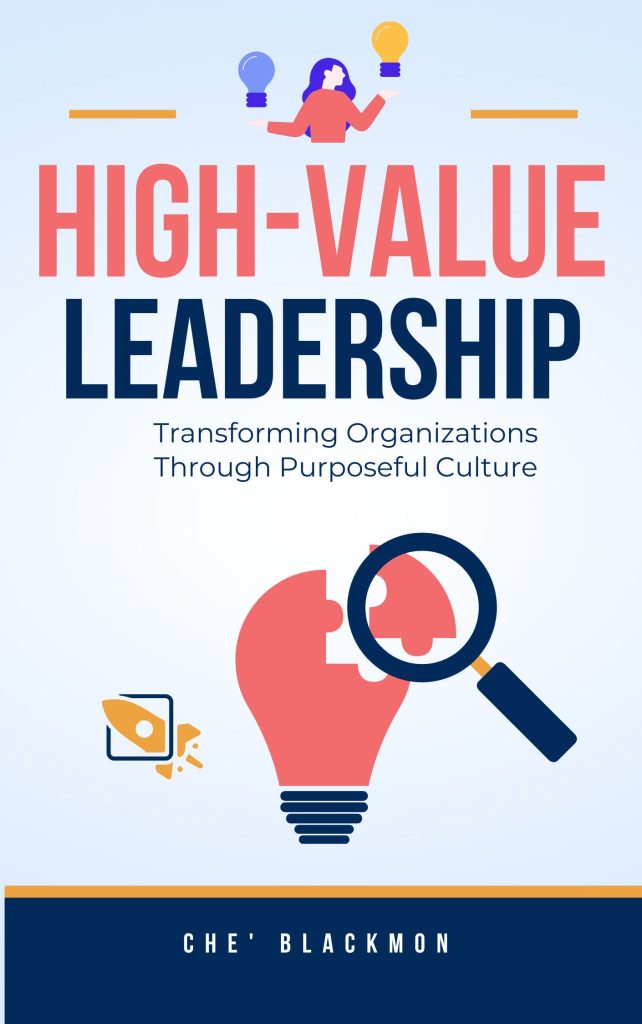Your cart is currently empty!
Bad leadership isn’t just a morale issue—it’s a financial crisis hiding in plain sight. While CFOs meticulously track every expense line, the most devastating costs often lurk in exit interviews, productivity reports, and talent acquisition budgets. Let’s talk about the real numbers behind toxic culture and why investing in high-value leadership delivers returns that would make any investor jealous.
The Million-Dollar Leak You’re Not Tracking 📊
There was a manufacturing company in Detroit that thought their 35% annual turnover was “just industry standard.” Their CFO focused on equipment depreciation and supply chain costs while missing the $2.3 million hemorrhaging from their organization through preventable turnover. The culprit? Three toxic middle managers whose behavior drove away top talent, particularly high-performing Black women who were told they were “too assertive” when displaying the same leadership qualities praised in their male counterparts.
This isn’t unique. Research from Gallup shows that bad managers account for 70% of variance in employee engagement, and disengaged employees cost U.S. companies up to $550 billion annually. For a 100-person company, just one toxic leader can cost $375,000 per year in turnover, reduced productivity, and missed opportunities.
The math is brutal but simple. When traditionally overlooked talent—especially Black women who face both racial and gender bias—leave your organization, you lose:
- Their institutional knowledge (irreplaceable)
- Their diverse perspectives that drive innovation (proven to increase revenue by 19%)
- Their network connections (often spanning multiple communities)
- The trust of other underrepresented employees who see the writing on the wall
Beyond Exit Interviews: The Predictive Power of Cultural Health Metrics 🔍
Smart CFOs have learned to look beyond lagging indicators like turnover rates. They’re tracking leading indicators that predict problems 6-12 months before they show up in exit interviews. These forward-looking metrics include:
Engagement Velocity: How quickly new hires become fully productive. High-value cultures see 50% faster ramp-up times.
Innovation Index: The percentage of ideas that come from all levels, not just senior leadership. Companies with inclusive cultures generate 45% more revenue from innovation.
Psychological Safety Score: Teams with high psychological safety see 27% reduction in turnover and 40% improvement in quality metrics.
Advancement Equity Ratio: The rate at which traditionally overlooked talent advances compared to their peers. Organizations with equitable advancement see 21% higher profitability.
As discussed in “High-Value Leadership,” these metrics aren’t just HR nice-to-haves—they’re predictive indicators of financial performance. Companies that actively measure and improve these scores see average ROI of 5.2x on their culture investments.
The Compound Interest of Inclusive Leadership 📈
There was a technology firm that decided to invest $150,000 in developing their frontline managers, with specific focus on inclusive leadership practices. The CFO was skeptical until the one-year results came in:
- Turnover dropped from 28% to 16% (saving $840,000)
- Customer satisfaction scores increased 15% (adding $1.2 million in retained revenue)
- Three breakthrough product innovations came from previously overlooked team members
- Recruiting costs dropped 40% due to improved employer brand
The real magic? They specifically addressed the systemic barriers that had prevented Black women and other underrepresented groups from advancing. By implementing bias-interruption training and creating transparent promotion criteria, they discovered they already had the talent—it had just been systematically overlooked.
This aligns with findings from McKinsey showing that companies in the top quartile for ethnic diversity are 36% more likely to outperform on profitability. But here’s what most miss: it’s not just about hiring diverse talent. It’s about creating cultures where that talent can actually thrive and lead.
Measuring What Matters: Your Culture Balance Sheet 💼
Traditional financial statements don’t capture culture assets and liabilities, but forward-thinking CFOs are creating shadow balance sheets that do:
Culture Assets:
- Leadership bench strength (especially diverse leaders ready for promotion)
- Employee capability investments (training, development, coaching)
- Innovation pipeline (ideas in development from all levels)
- Brand value from being an employer of choice
- Network effects from alumni who become customers/partners
Culture Liabilities:
- Turnover risk (probability-weighted expected costs)
- Toxic leader remediation costs
- Legal/compliance risk from discrimination claims
- Productivity debt from disengagement
- Innovation opportunity cost from homogeneous thinking
One Fortune 500 company found their culture liabilities exceeded $47 million—more than their entire IT budget. The wake-up call led to a comprehensive culture transformation that returned $3.40 for every dollar invested within 18 months.
The Traditionally Overlooked Talent Dividend 🌟
Here’s what happens when organizations finally recognize and develop traditionally overlooked talent, particularly Black women who have navigated systemic barriers to reach leadership positions:
Enhanced Risk Management: Leaders who’ve navigated bias develop superior pattern recognition for organizational blind spots. They see risks others miss because they’ve had to be hypervigilant about organizational dynamics.
Expanded Market Intelligence: Black women influence $1.5 trillion in purchasing decisions annually. Having their perspectives in leadership helps organizations understand and serve diverse markets more effectively.
Accelerated Innovation: Research from BCG shows that diverse leadership teams generate 19% more innovation revenue. When you promote traditionally overlooked talent, you’re not just being fair—you’re being smart.
Strengthened Succession Planning: Organizations that develop diverse leadership pipelines have 3x more internal candidates ready for senior roles, reducing expensive external searches and maintaining institutional knowledge.

From Cost Center to Profit Driver: The CFO’s Culture Playbook 🎯
Transform culture from a fuzzy concept to a measurable business driver with these strategies:
- Implement Predictive Analytics: Use AI-powered tools to identify turnover risk, engagement drops, and culture hot spots before they become expensive problems.
- Create Culture P&L Statements: Track culture investments and returns just like any other business unit. Include both hard costs (turnover, recruiting) and soft costs (innovation loss, productivity decline).
- Establish ROI Thresholds: Set minimum acceptable returns for culture investments. Industry benchmark: 3x ROI within 24 months for leadership development programs.
- Deploy Rapid Interventions: When data shows a toxic leader or culture problem, act within 30 days. Every month of delay costs an average of $31,000 in collateral damage.
- Measure Inclusive Excellence: Track not just overall metrics but disaggregated data showing impact on traditionally overlooked groups. This reveals hidden problems and opportunities.
The Executive Equation: When Numbers Meet Humanity 💪
As explored in “Rise & Thrive,” the most successful organizations recognize that numbers and humanity aren’t opposing forces—they’re multipliers. When CFOs partner with CHROs to create data-driven, human-centered cultures, the results are transformative:
- Employee productivity increases 21%
- Customer metrics improve 12%
- Profitability grows 23%
- Stock price outperformance of 28%
There was a healthcare system that discovered their best-performing unit was led by a Black woman who had been passed over for promotion three times. When they finally promoted her to regional director and replicated her leadership approach, they saw:
- Patient satisfaction scores increase from 72% to 91%
- Nurse turnover drop from 24% to 9%
- Cost per patient decrease 18%
- Employee engagement jump from bottom quartile to top decile
The lesson? Your next breakthrough leader might be hiding in plain sight, overlooked due to bias rather than lack of capability.
Action Steps for Financial Leaders 🚀
Immediate (Next 30 Days):
- Calculate your true cost of turnover including productivity loss, knowledge drain, and cultural impact
- Identify your three highest-risk leaders (hint: check exit interview patterns)
- Review promotion and compensation data for equity gaps
- Schedule skip-level meetings with high-potential traditionally overlooked talent
Short-term (Next Quarter):
- Implement pulse surveys with predictive analytics
- Create culture scorecards with financial impact metrics
- Establish intervention protocols for toxic leaders
- Launch inclusive leadership training for middle managers
Long-term (Next Year):
- Build comprehensive culture ROI tracking systems
- Develop diverse succession pipelines for critical roles
- Create innovation programs that tap all levels of talent
- Establish culture transformation funds with clear ROI targets
The Bottom Line That Actually Matters 💯
Bad leadership is a luxury no organization can afford. In an economy where talent is the ultimate differentiator, toxic cultures represent an existential threat to competitiveness. But here’s the opportunity: organizations that transform their cultures see returns that dwarf traditional cost-cutting measures.
The data is clear. The business case is proven. The only question is whether you’ll continue treating culture as a soft issue or recognize it as the hard financial imperative it truly is.
Remember: Every day you tolerate bad leadership costs money. Every traditionally overlooked leader you fail to develop is a missed opportunity. Every toxic culture you allow to persist is a competitive advantage you’re handing to your rivals.
Discussion Questions for Your Leadership Team 🤔
- What would our P&L look like if we added a line item for “culture impact”?
- How many high-potential Black women and other traditionally overlooked talents have left our organization in the past two years, and what was the true cost?
- If we could predict turnover six months in advance, how much could we save through targeted interventions?
- What would change if we held leaders as accountable for culture metrics as we do for financial metrics?
- How might our innovation and market reach expand if our leadership team truly reflected our customer base?
Ready to Transform Your Culture ROI?
Stop letting bad leadership drain your profits. Che’ Blackmon Consulting specializes in transforming cultures from cost centers to profit drivers, with particular expertise in unlocking traditionally overlooked talent.
We combine 25+ years of hands-on experience with AI-powered predictive analytics to help you:
- Identify and eliminate toxic leadership before it costs millions
- Develop inclusive excellence that drives innovation
- Build high-value cultures that attract and retain top talent
- Generate measurable ROI from culture investments
Our clients see average returns of 5.2x on culture transformation investments, with many achieving payback within 90 days.
Start your culture transformation today:
📧 admin@cheblackmon.com
📞 888.369.7243
🌐 cheblackmon.com
Because culture isn’t just about feeling good—it’s about performing better, innovating faster, and winning in the marketplace.
#CultureROI #LeadershipDevelopment #CFO #ToxicLeadership #HighValueLeadership #DiversityAndInclusion #WorkplaceCulture #LeadershipMatters #PeopleAnalytics #TalentManagement #InclusiveLeadership #BusinessStrategy #HRAnalytics #OrganizationalCulture #ExecutiveLeadership


